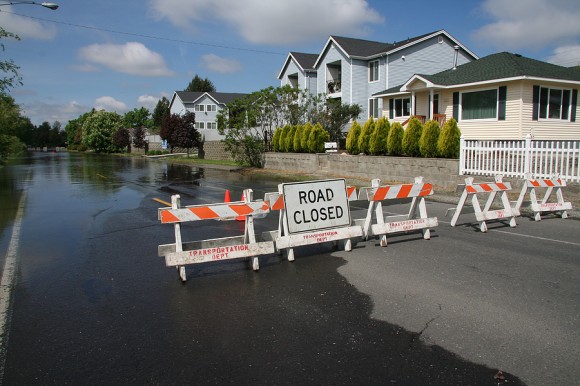Privatization of the National Flood Insurance Program (NFIP) would present a huge growth opportunity to the property/casualty market, allowing insurers to tap into about $3.3 billion of yearly premiums. But the flood insurance market has a long way to go before it becomes viable for profit-driven carriers and investors, says Deloitte in its newest white paper.
The Deloitte report, “The Potential for Flood Insurance Privatization in the U.S.: Could Carriers Keep Their Heads Above Water?”, concludes that despite the opportunities flood insurance presents, most insurers will likely pass on taking a piece of the risk unless the obstacles that undermined the NFIP’s solvency and put it $30 billion in debt are dealt with first.
Among those obstacles:
- FEMA estimates that 20 percent of insured property owners pay subsidized premiums, and many of those properties are in high-risk areas. Underpricing of flood insurance to make coverage affordable might actually be encouraging construction in high-hazard areas.
- Repetitive loss properties account for a large share of all flood insurance exposures.
- Convincing property owners to purchase flood insurance remains a challenge. Indeed, only 18 percent of properties in flood zones are believed to have coverage.
- Many homeowners believe recently updated flood maps may be overstating their flood risks.
- Property owners with lower flood exposure often pass on the coverage, while those in flood-prone areas may assume that federal disaster assistance will help them if a major flood event occurs.
Biggert-Waters
Congress tried to address many of these issues with the Biggert-Waters Flood Insurance Reform Act of 2012, which reauthorized the NFIP for five additional years. The act included measures to gradually increase rates to match risk as well as to update flood maps, but both the rate increases and revised flood maps have already been challenged by consumers.
Exposure to flood losses across the United States is expected to increase due to climate change, according to FEMA. Having the private market take on some of the risk could be a win-win for taxpayers as well as the insurance industry, Deloitte says, but the challenge is ensuring that any public-private partnership in flood risk is mutually beneficial.
Deloitte suggests some solutions:
- Private carriers could write a certain level of primary coverage while reinsuring catastrophic levels with the federal government.
- The NFIP could purchase reinsurance from the private sector, spreading the risk and limiting exposure in high-catastrophe years.
- The capital markets could help spread risks through the sale of catastrophe bonds.
- Private insurers could combine their resources and diversify risk through a flood insurance pool.
- Private insurers could pick up more moderate flood risks, leaving the NFIP in place as the insurer of last resort.
No matter which privatization option is adopted, most industry leaders queried by Deloitte believe the government should retain a role in flood-hazard assessment and mitigation, including the mapping of flood zones as well as the enforcement of zoning laws and building codes to limit flood-related exposures.
Related Articles:
Was this article valuable?
Here are more articles you may enjoy.



 Honda Launches Insurance Agency Powered by VIU by HUB
Honda Launches Insurance Agency Powered by VIU by HUB  State Farm Implements 27% Rate Increase for Illinois Homeowners
State Farm Implements 27% Rate Increase for Illinois Homeowners  Renewal Rates in Q2 Tell of ‘Slowly Softening’ Commercial Lines Market, Says Ivans
Renewal Rates in Q2 Tell of ‘Slowly Softening’ Commercial Lines Market, Says Ivans  Drone Crashes, Security Threats Have States Demanding Power to Take Them Down
Drone Crashes, Security Threats Have States Demanding Power to Take Them Down 

